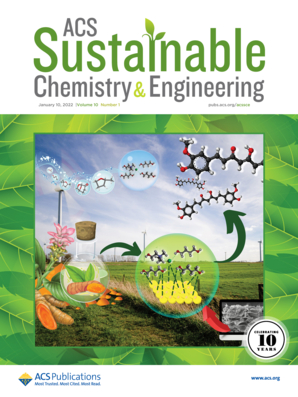Synthesis of Bis(dodecylammonium) Tetrachlorocuprate Using Ball Milling for Thermal Energy Storage
IF 7.1
1区 化学
Q1 CHEMISTRY, MULTIDISCIPLINARY
引用次数: 0
Abstract
Layered hybrid halometallates are highlighted for their adaptable thermal, electrical, and optical properties by modifying the alkylammonium or metal constituents. However, the conventional synthesis procedures of these materials present some sustainability and scalability issues. To tackle these issues, mechanochemistry is a promising alternative synthesis which uses mechanical energy and can reduce the solvent content required. Mechanochemical synthesis has proven to be an effective synthesis route for various perovskite structures, but research on bis(alkylammonium) tetrahalometallates is limited. Here, we explore the feasibility of synthesizing bis(alkylammonium) tetrahalometallates through ball milling and reducing solvent usage. Crystal and molecular results confirmed the successful synthesis with minimal impurities, <5 wt %. The bis(alkylammonium) tetrahalometallates obtained through ball milling presented comparable enthalpy and specific heat values to those obtained through traditional synthesis routes. Moreover, the ball milling synthesis consumed significantly less energy and solvent and led to higher reaction yield than the traditional synthesis methods, thereby enhancing the sustainability of the process. Overall, the results validate the synthesis through ball milling as a viable and environmentally efficient method for bis(alkylammonium) tetrahalometallates.

求助全文
约1分钟内获得全文
求助全文
来源期刊

ACS Sustainable Chemistry & Engineering
CHEMISTRY, MULTIDISCIPLINARY-ENGINEERING, CHEMICAL
CiteScore
13.80
自引率
4.80%
发文量
1470
审稿时长
1.7 months
期刊介绍:
ACS Sustainable Chemistry & Engineering is a prestigious weekly peer-reviewed scientific journal published by the American Chemical Society. Dedicated to advancing the principles of green chemistry and green engineering, it covers a wide array of research topics including green chemistry, green engineering, biomass, alternative energy, and life cycle assessment.
The journal welcomes submissions in various formats, including Letters, Articles, Features, and Perspectives (Reviews), that address the challenges of sustainability in the chemical enterprise and contribute to the advancement of sustainable practices. Join us in shaping the future of sustainable chemistry and engineering.
 求助内容:
求助内容: 应助结果提醒方式:
应助结果提醒方式:


